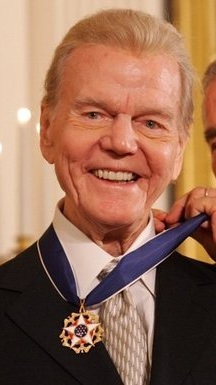How To Grab Your Audience With Your Voice
What you say in your interviews and speeches is incredibly important, but how you say it can make all the difference.
When you listen to many of the most successful television and radio personalities, pay attention to how they alter their tempo or speak a little louder or softer when they want to emphasize a point. That change in their voice or pacing draws you in, signaling that what they just said—or what they are about to say—is something important you’ll want to remember.
You should apply these same techniques in your interviews and presentations.
A great example of this was radio broadcaster Paul Harvey. For nearly 40 years, he worked the airwaves with his signature lilt, dramatic pauses, and of course, boldly announced “the rest… of the story.” When I was in college, I worked at a local radio station that aired Mr. Harvey’s commentaries twice daily, and to this day, I still recall his dramatic, distinct style. So imagine my delight when, while watching the Super Bowl, a commercial for Ram trucks used a portion of Mr. Harvey’s 1978 speech to the Future Farmers of America convention, called, “So God Made a Farmer.”
While his words were important and the pictures were poignant, they wouldn’t have resonated half as much without Mr. Harvey’s unique delivery. (Ed note: The ad itself received mixed reviews – if you don’t agree with the ad’s content, focus on Harvey’s delivery.)
Mr. Harvey was, of course, incredibly distinct, and I don’t suggest you try to imitate him. But do listen and think about how effective it was when he used those dramatic pauses, or sped up a bit to show his passion. Then, use that example to find your own communication style.
PUBLIC SPEAKING EXERCISE
You can practice changing up your pace and voice at home using a method commonly used with television and radio reporters reading their scripts. Here’s how:
Take the first few paragraphs of a newspaper story. Highlight or underline the words you think you should emphasize in the paragraphs. Mark places that would make sense to pause for dramatic purposes. Then, read it aloud. For example:
A local student is now the NATION’S SPELLING BEE CHAMPION. /// 14-year-old JOHN SMITH, from Brooklyn, spelled more than 40 WORDS PERFECTLY in the competition, beating out HUNDREDS of students from across the country.
Once you’ve mastered this technique and honed your personal style, you’ll be able to emphasize your most important messages in interviews and speeches not only with your carefully formed words but also with your voice.
Author Christina Mozaffari is the senior media trainer for Phillips Media Relations.
Have the best of the blog delivered to your inbox twice per month! Enter your name in the box on the upper right of the blog to join our mailing list.




This is great advice. Yesterday in an interview, I worked the same strategy you write about. I knew I’ve hit a sweet note when the interviewer smiled — that’s always a good sign.